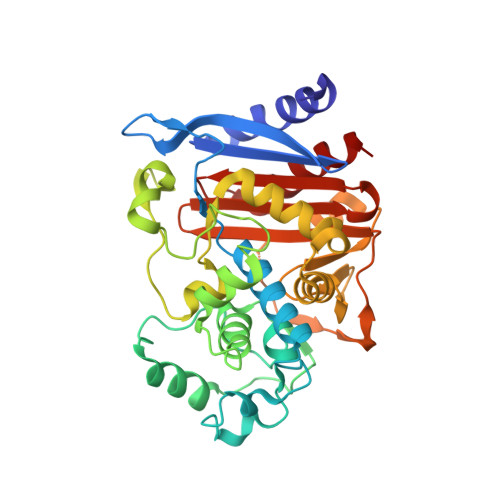Structural milestones in the reaction pathway of an amide hydrolase: substrate, acyl, and product complexes of cephalothin with AmpC beta-lactamase.
Beadle, B.M., Trehan, I., Focia, P.J., Shoichet, B.K.(2002) Structure 10: 413-424
- PubMed: 12005439
- DOI: https://doi.org/10.1016/s0969-2126(02)00725-6
- Primary Citation of Related Structures:
1KVL, 1KVM - PubMed Abstract:
Beta-lactamases hydrolyze beta-lactam antibiotics and are the leading cause of bacterial resistance to these drugs. Although beta-lactamases have been extensively studied, structures of the substrate-enzyme and product-enzyme complexes have proven elusive. Here, the structure of a mutant AmpC in complex with the beta-lactam cephalothin in its substrate and product forms was determined by X-ray crystallography to 1.53 A resolution. The acyl-enzyme intermediate between AmpC and cephalothin was determined to 2.06 A resolution. The ligand undergoes a dramatic conformational change as the reaction progresses, with the characteristic six-membered dihydrothiazine ring of cephalothin rotating by 109 degrees. These structures correspond to all three intermediates along the reaction path and provide insight into substrate recognition, catalysis, and product expulsion.
- Department of Molecular Pharmacology and Biological Chemistry, Northwestern University, Chicago, Illinois 60611, USA.
Organizational Affiliation:


















